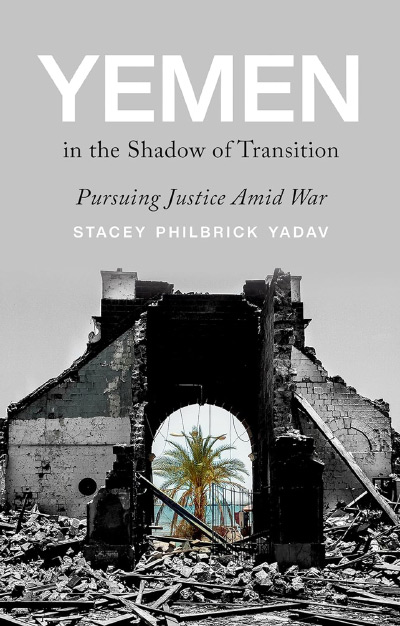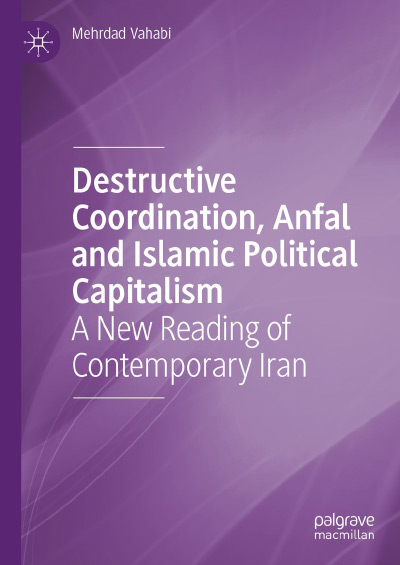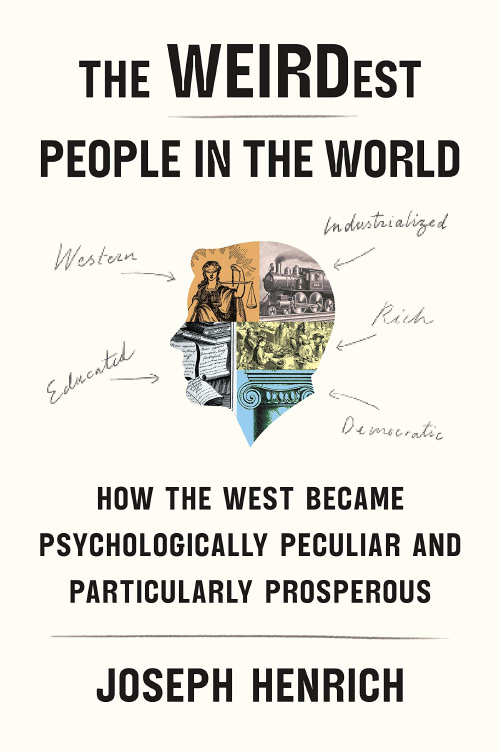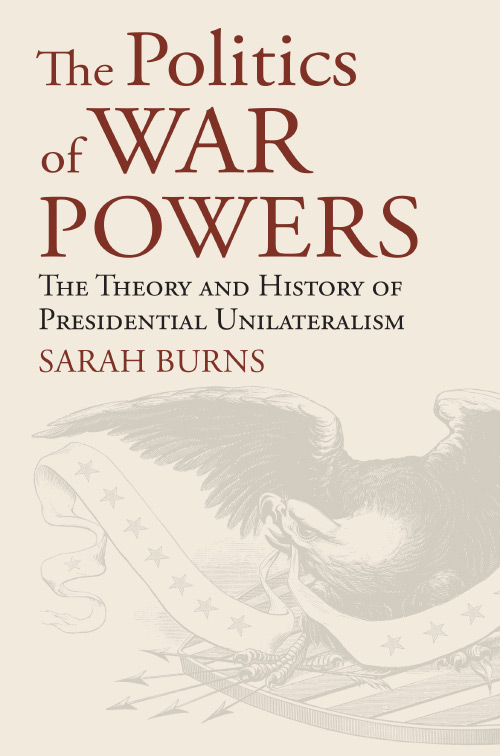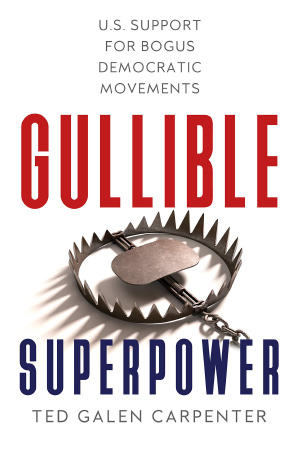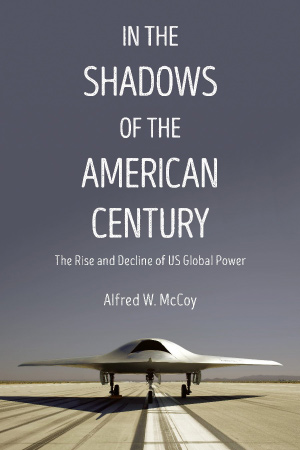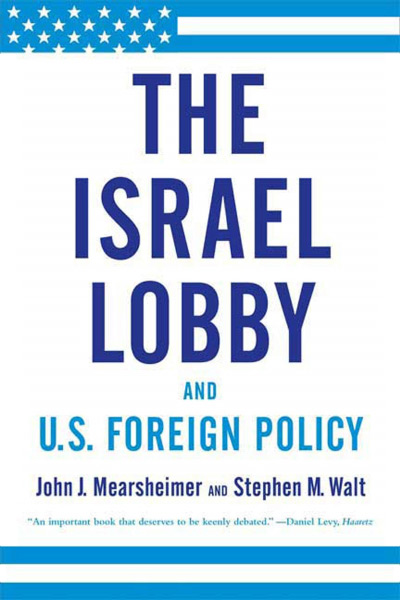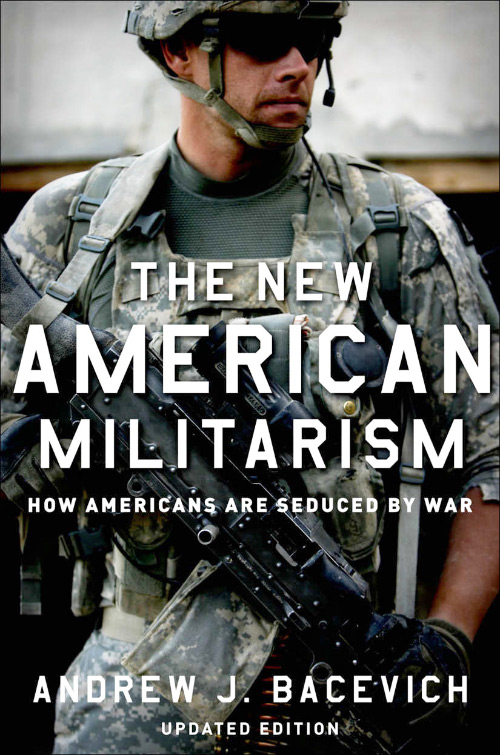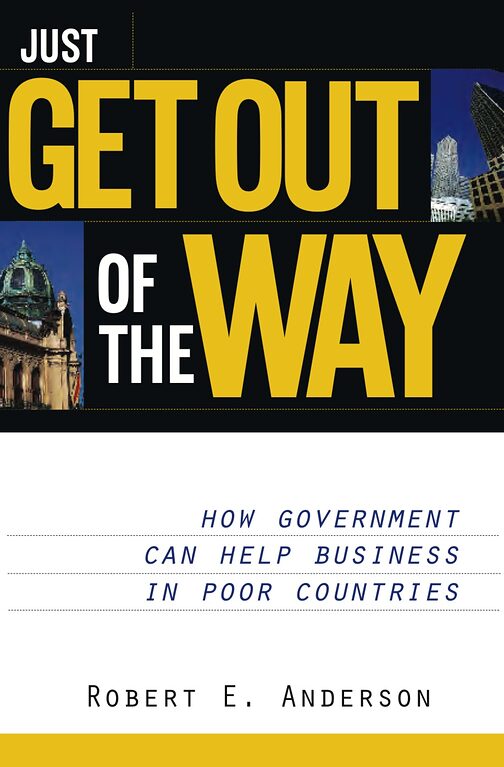Has the international community focused on high-level partisan negotiations and contributed to neglecting the role of civil society and justice work in the ongoing Yemen Civil War? Can bubbles of civil society and peacebuilding in the middle of an ongoing war, with no end in sight, contribute to achieving post-conflict justice? Are local civil actors' justice claims and grievances relevant to the national peace-building process? In Yemen: In the Shadow of Transition, Stacey Philbrick Yadav, a scholar of International Relations and expert on Yemen, answers these crucial questions with a decisive yes. The book tracks the marginalization of the local justice claim through an excellent macro-historical study of the evolution of social, political, and economic conflict in Yemen since the formation of the Republic of Yemen in 1962 and the independence of South Yemen, with special attention on the period after the unification of the two Yemens, making the Republic of Yemen (ROY) in 1990.
Since the onset of the Yemen Civil War in 2015, many scholars have attempted to study the conflict by analyzing the history, interests, grievances, and strategies of the political groups involved in the war. The special attention given to the major political players leaves a significant gap in studying the grievances of many citizens whose voices still need to be considered in official internationally led diplomatic negotiations. Yadav divides choices of engaging justice claims into substantial engagement, strategic engagement, and disengagement. Substantial engagement entails engaging justice claims without considering opportunistic or ulterior motives. Comparatively, strategic engagement entails engaging the justice claims of specific segments of the citizenry for strategic or political gain. Finally, disengagement entails disregarding justice claims entirely or suppressing them. Yadav emphasizes that justice can only be sustainable when different justice claims can be voiced and a solution that substantially engages and attempts to address these various justice claims is produced. She observes that the ROY, more accurately called Saleh’s government since Ali Abdullah Saleh consolidated and centralized his power across his career as Yemen’s president, disengaged or strategically engaged Yemenis’ religious, identitarian, or socioeconomic justice claims. Additionally, international interveners frequently imposed their values on the Yemeni people without substantial engagement to understand the desires and goals of the Yemenis they seek to help. The political environment under the ROY and international bodies seeking to reform it have been unsuitable for the emergence of peace. So, many Yemeni political activists have turned to civil action to pursue justice outside the scope of partisan bodies. With the increase in the disenchantment with Saleh’s government’s “engagement” or lack thereof, the extra-institutional unincorporated element of civil action grew and culminated in the Yemeni Revolution of 2011.
The book covers many themes. Most saliently, it explores the role of civil action in transitional justice or how nations in transition from one regime to another respond to and quell the grievances associated with the legacies of human rights abuses. Though the author may not have intended it, the book surveys the failures of a centralized approach to governance in Yemen and the shortcomings of the international pursuit of transitional justice, which frequently is too distant from the citizenry to help.
The book has two unique strengths compared to the literature on Yemen, and peace-building more generally. Yadav uses over a hundred interviews she conducted with Yemeni political activists and civil workers and her fieldnotes as the primary source of information, perhaps referencing them more than secondary sources. Her fieldwork allows the reader to analyze shared local grievances and interpret the rhetoric used by various activists and civil workers from different political affiliations and provinces. The author is comfortable leaving her reader with some of the contradictions voiced by her interviewees in order to emphasize reflexivity and the need for the inclusion of these civil actors who can frame and reframe projects to address the justice claims of their constituents.
Additionally, Yadav emphasizes justice work, transitional justice defined and executed by civil actors, and peace as a bottom-up effort. Her points in the book have fascinating implications when read through a political economist’s lens. Unlike most research on the Yemeni Civil War, which prioritizes studying the potential of peace among the prominent political actors at war, she suggests that developing rules for conflict management and peace is an emergent process. Those who place conflict management efforts primarily in high-level diplomatic negotiations among the major political parties of a conflict implicitly assume that an outside entity can ascertain what rules and institutions would manage conflicts between parties. According to them, a sustainable peaceful solution among political groups is possible without explicit civil participation.
Comparatively, Yadav, unknowingly appreciating the main takeaway of the Coase Theorem, highlights the primal role of civil work in the bargaining process. Like Ronald Coase, she understands that the bargaining process of all affected parties, political and civilian, allows the diverse subjective evaluations of civilians to emerge most efficiently. Therefore, only a solution that takes all affected parties’ subjective evaluations, or justice claims, can be sustainable.
However, the book makes unwarranted dichotomies in its analysis of the political groups in Yemen. It may be analytically convenient to separate political work from civil work cleanly. However, political actors, or political participants in violent conflict like the Houthis, Hirak, and others, have powerful civil components and massive soft power. The civil component of their work, which at least historically was based on their civil justice work, was and is still needed to establish their legitimacy and maintain their popular support. Without the legitimacy of some of their claims in the eyes of some Yemenis, civil resistance that dissolves their power would become imminent.
The book also leaves essential questions that need to be explored. The fact that incorporated or established political groups with a seat at the negotiation table all had a historical and contemporary civil component poses a challenge to Yadav’s thesis. After the Yemeni Revolution of 2011, the National Dialogue Conference (NDC) was a dialogue conference brokered by the UN and the Gulf Cooperation Council to address various justice claims and replace the long-time ruler, Ali Saleh, with a new president. Yadav notes that justice workers were underrepresented in the NDC despite their important role during the revolution. Yet, suppose there are such widespread shared and unique civil concerns around issues of the local economy, education, and women’s rights that could not have been achieved without justice workers. Why could its representatives not build a support base interlocally into more organized factions? Organized groups can more easily be included in a dialogue process; that is precisely what other extra-partisan groups, like the Houthis and Hirak, did, only violently. The lack of incorporation for shared local concerns by justice workers has two possible implications. One possibility is that the civil sector of justice is developed, but civil justice workers failed strategically to organize themselves into large enough coalitions with specific issue-based claims interlocally. In this case, it is only a matter of time before justice workers learn better strategies to achieve their goals. The second possibility is that the civil sector of justice work in Yemen, while it continues to grow, is still in its nascent stages, which is why it is not as influential in transitional justice. The civil sector is also nascent in most developing countries, so it would not be surprising. If true, it would mean that justice workers must continue prioritizing political education and instilling a nonviolent civil attitude among Yemenis, such that the civil sector is more powerful.
While Yadav convincingly objects that Yemen's NDC should have included more relevant extra-partisan voices, it must explain why loosely organized local justice workers are unlikely to be substantially engaged by international organizations for institutional reasons. To the extent that foreign governments and central bodies are involved in the peace process, it is difficult to substantially engage relevant decentralized nonpartisan or extra-partisan efforts because they have no representative body. Regardless of the popularity or representativeness of the modal Yemeni’s concerns, without a shared representative body among the justice workers fighting for common civil concerns, it is impractical to expect engagement, whether during NDC or beyond.
The resistance to including civil or justice workers may be because of the vagueness and disparate goals that civil groups advocate for and represent. After all, local justice workers are not represented by official domestic bodies that study their constituents. Therefore, it is more difficult for peacebuilders on a national or provincial level to assess the weight their justice claims should be given in relation to everyone else's. Thus, international and national bodies, even in an ideal scenario of being impartial and substantially engaged in listening to justice claims of all, face a genuine dilemma: The Unincorporated Voices Dilemma. On the one hand, to produce sustainable peace, the justice claims of civilians must be wholistically engaged. On the other hand, the justice claims of many civilians are not incorporated into political bodies, so it is difficult to engage them in transitional justice negotiations effectively. The Unincorporated Voices Dilemma demonstrates that international bodies do not produce peace, but, at best, can facilitate a platform where incorporated bodies can bargain for a solution. And unincorporated local bodies will only be heard once they can organize themselves interlocally and convincingly prove they ought to be heard on a transitional justice dialogue platform.
Yemen in the Shadow of Transition does a great job explaining the grievances of different political parties in Yemen and their evolution over time; thus, I recommend it specifically for those interested in the complex workings of international peace-building efforts and transitional justice. The book begins and ends with optimistic tones, so I would like to share some optimism. While the voices of justice workers have been disengaged or strategically engaged, and it may take too long for the current political groups in negotiation to discover a peaceful resolution to the war, the discussions on federalism may be a silver lining.
Federalism may alleviate many of the concerns of justice workers, even unintendedly, because it permits relocation to provinces or states with more economic freedom, better education, and protection of women’s rights. Extensive literature exists on federalism's role in protecting civil liberties, even as an unintended consequence. Consider how federalism’s interjurisdictional competition pressured states to expand women’s rights in U.S. history (Jayme Lemke, “Interjurisdictional Competition and the Married Women’s Property Acts,” 2016, Public Choice 166). Lemke shows that state legislators in a federal system directly benefitted from increased local populations, and movement between jurisdictions became less costly. Thus, legislators enacted reforms that expanded women’s rights and drew more women to immigrate to their jurisdictions. These reforms also increased tax revenues, benefitting legislators as a result. The hope is that since decentralization and federalism have been serious considerations for Yemen since the NDC, wider gender-based and economic justice claims will be addressed and resolved by local jurisdictional governors competing to attract citizens to their jurisdictions. Thus, interjurisdictional competition may address issues not sufficiently engaged during the peace process. Therefore, I remain cautiously optimistic.
| Other Independent Review articles by Yahya Alshamy | ||
| Fall 2023 | Kenneth Boulding: Knowledge, Conflict, and Power | |
| Summer 2023 | The Market Process as Nonviolent Action | |
| Summer 2023 | Nonviolent Jihad: The Framework of Nonviolent Action in Islam | |
| [View All (5)] | ||



